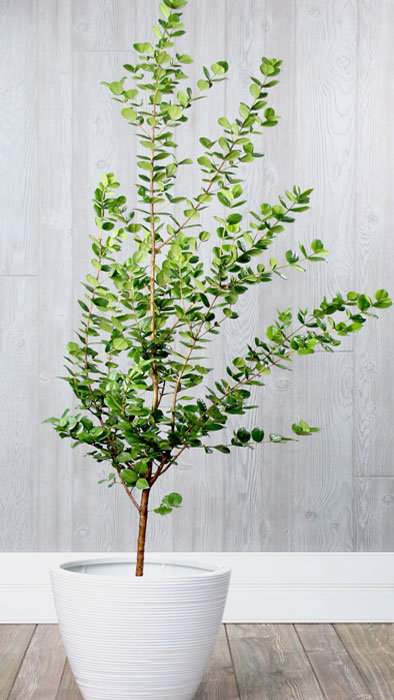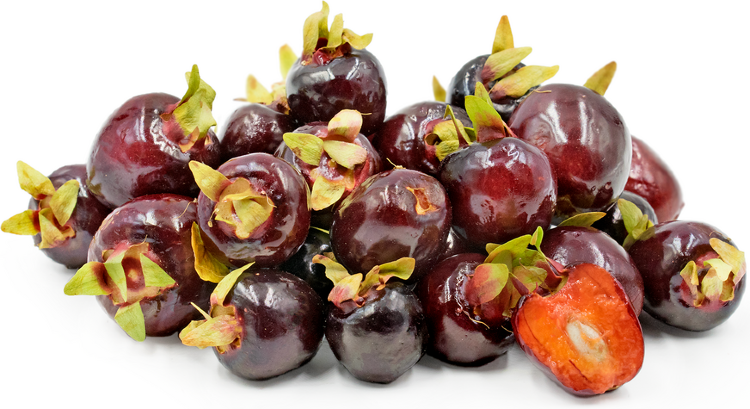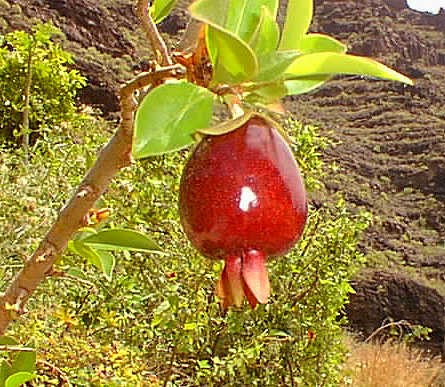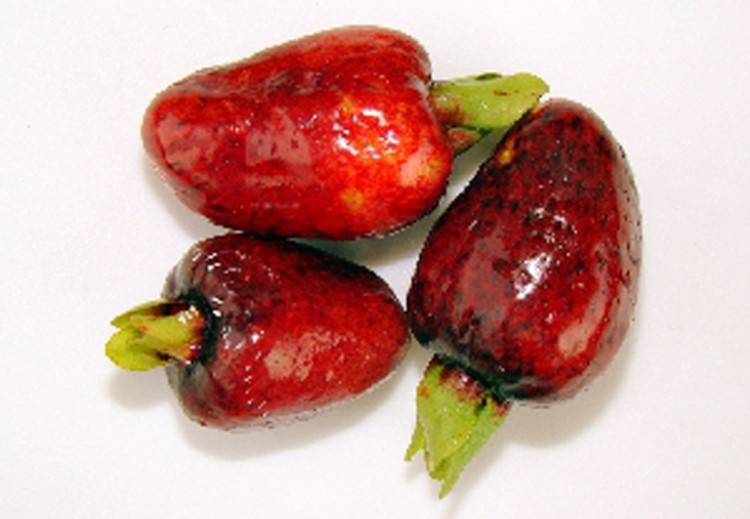- Overview
Common name: Cherry of the Rio Grande Botanical name: Eugenia aggregata Avg Height X Width: 12' X 8' Family: Myrtaceae Origin: Brazil Season: April- May Damage temp: 27 F Cherry of the Rio Grande Tree in a 3 Gallon Container. This delicious cherry is typically 1-2 inches long and oval in shape. When ripe they are deep purple to black and have a full cherry-like flavor. The trees can be grown in large pots, hedged, or used as a specimen. Though Cherry of the Rio Grande is considered a "tropical cherry" it can easily tolerate temperatures to 20F degrees. Excellent eaten fresh or in jellies. Easily container grown to 6 - 8 feet and is self fruitful.
Cultural Practices
Blooming Habits
Fruiting Habits
Propagation
Plant Cultivation
Cultural Practices
Cherries of the Rio Grande are easy to grow, requiring relatively little maintenance for the growth of healthy, productive plants. Fruit size and quality depends to a large extent on proper nourishment and an adequate water supply at the time of fruit development. When first planted, they need a complete fertilizer in a 1-1-1 ratio, such as 6-6-6, that also contains magnesium. Start with no more than 1/4 pound at monthly or bi-monthly intervals, increasing the rates commensurate with growth. If iron deficiency in calcareous soils is a problem, this element should be applied as Sequestrene 138, injected or drenched into the soil when needed. Nutritional sprays to supply other minor elements should also be applied as needed. After the tree has matured, a fertilizer such as 8-3-9 with 5% MgO is more appropriate. The plants should be supplied with adequate water at all times but especially during bloom and fruit development. The cherry of the Rio Grande has fairly good drought tolerance. The cherry of the Rio Grande requires very little pruning to make an attractive tree and it is seldom pruned to make a hedge.
Blooming Habits
In Florida, the cherry of the Rio Grande starts blooming in the first part of March. The flowering season lasts several months, occasionally until May. The flowers are white.
Fruiting Habits
The fruit ripens on the bush 3 weeks after the blossom. It is red to deep purple about 1 inch diameter with a sweet cherry taste. The fruit can also be used for jelly, jam or juice.
Propagation
This species is generally propagated by seeds. Seeds usually germinate in less than a month, but can take 5 years to produce. The better selections can be veneer grafted, or reproduced by cuttings, although grafting has a low success rate.
Plant Cultivation
Small, often multi-branching tree or shrub, from 10-20ft high. They are hardy plants, to 20F when mature, though younger plants should be protected from frosts. Grow in full sun or part shade, water when flowering and fruiting, but plants are fairly drought tolerant. Small white flowers appear early in Spring and blooming and fruiting season continues for several months into Summer. Leaves are 2-3" long, glossy green, and somewhat folded down the center. Plants are tolerant of a variety of soils, but grow best in partly acidic soil. Excellent container specimen. Propagation: Often by seed, which take up to five years to produce fruit. Origin and Distribution. - Features
weight: 9.99 lbs : - ReviewsThere is no reviews yet...Be the first!
Be the first to write a review of this product!











